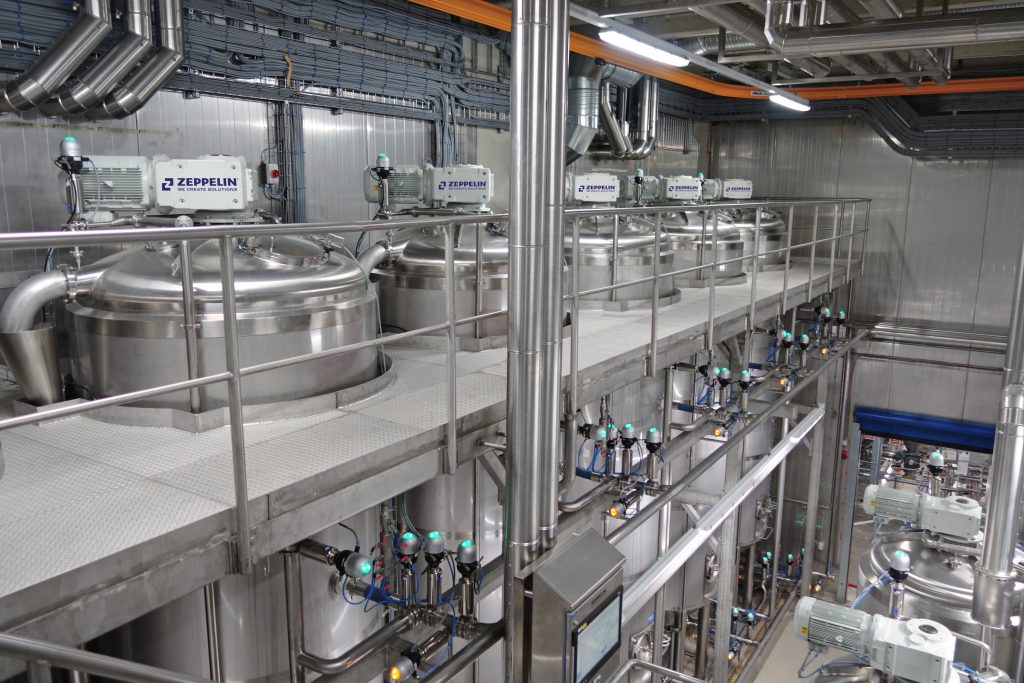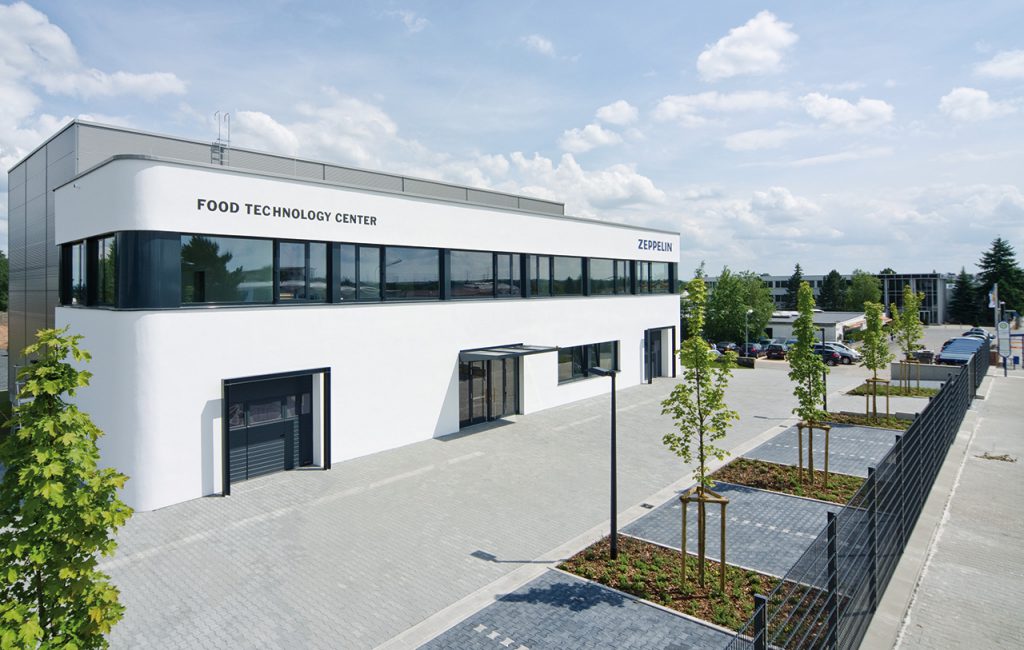There are many baking terms that we hear all the time, and often when we try to define them clearly, we realize the task is quite difficult. This is certainly the case for terms related to starter cultures and sourdough. Would you be able to explain to a neighbor the role of sourdough and how to obtain it? Or the difference between a sponge, poolish and a commercial starter? Even if you’re able to explain these terms, you might want to take a few minutes to read this article. I’m certain you’ll gain some worthwhile insights. And if you’re unfamiliar with these terms, then this article is for you. My objective is to explain these “pre-ferments” that have been used from the origins of baking up to the modern era.
In this article I will also focus on the current industrial production techniques of liquid sourdough. I’ll finish with a spotlight on the company Zeppelin Systems, and introduce their work in the baking industry.
My name is Ronan Le Bourhis, founder of Hopi Consulting. I’ve written these articles in an effort to clarify the processes in the baking industry and to give some exposure to some of my preferred suppliers, while at the same time keeping my impartiality and independence.
Firstly, I’d like to thank Olivier Michaut from Zeppelin Systems and Alix Laborderie, my intern who helped put this article together. Thanks also to Phillip Meade for the French-English translation.
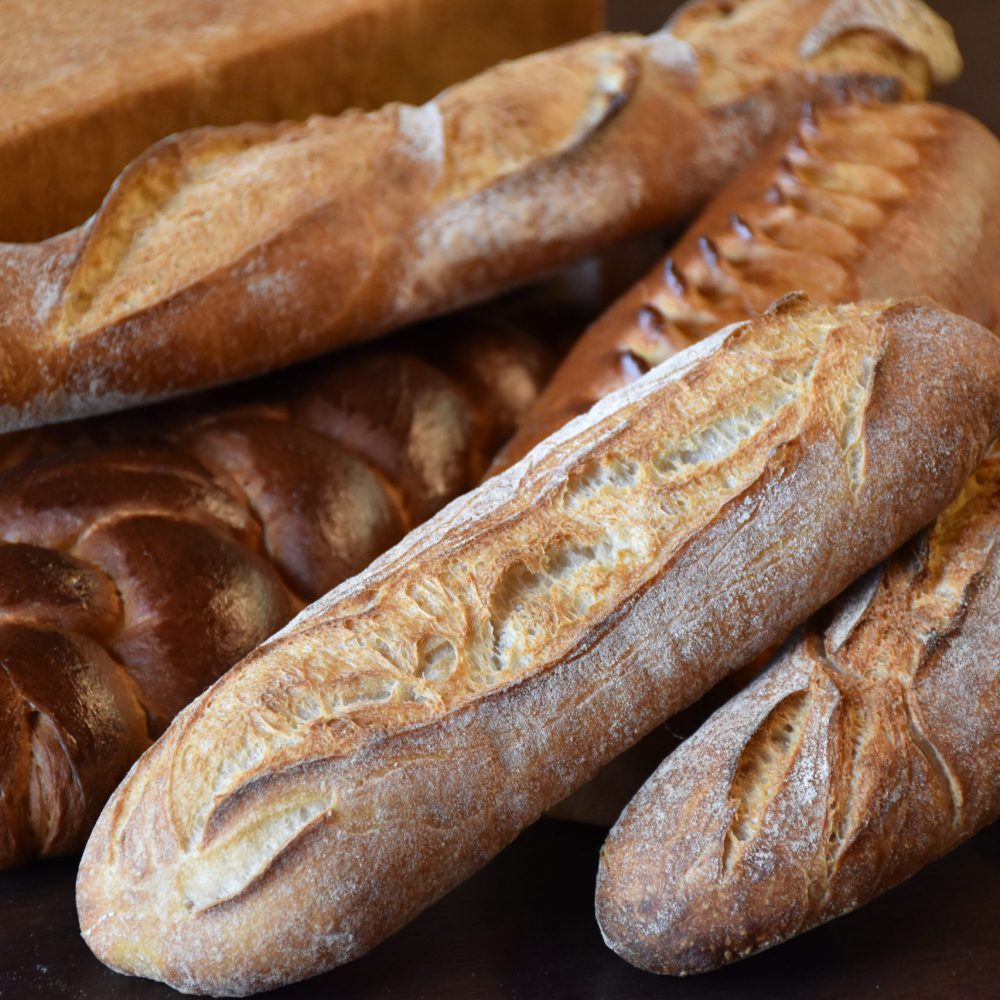
Let’s start with a definition…
The word “levain” (from French) or “leavening” comes from the Latin term “levare” which means “to rise”. This was the only way to make dough rise until the arrival of industrial leavening agents in the 19th century.
Working with a leavening agent, or starter culture, is a technique used by 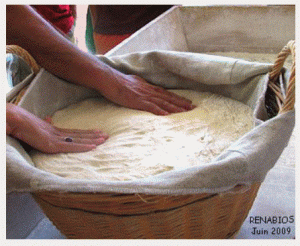 bakers in almost all products that “rise” (bread, pastries, pizzas, etc.) A starter is created through a natural process: fermentation. This is the key step that allows baked goods to “rise”, and to distinguish them from cooked cereals that don’t rise. These non-rising cooked goods, such as flatbread (made from corn) or hydrated mixtures such as porridge (from oatmeal or rye…), are found throughout the world.
bakers in almost all products that “rise” (bread, pastries, pizzas, etc.) A starter is created through a natural process: fermentation. This is the key step that allows baked goods to “rise”, and to distinguish them from cooked cereals that don’t rise. These non-rising cooked goods, such as flatbread (made from corn) or hydrated mixtures such as porridge (from oatmeal or rye…), are found throughout the world.
But making a good starter culture is an art in and of itself…
The traditional method of preparing sourdough
The traditional method will help us to understand the key ideas.
To begin with, the starter is made with a mixture of water and flour (wheat, rye, etc.) and perhaps ingredients containing sugar, such as honey or fruit. 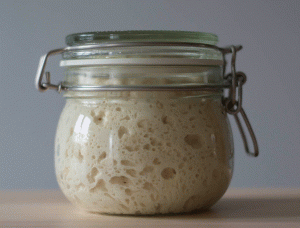 After a few days of rest, the starter will have begun the process of natural fermentation. Flour is an excellent base for a starter for two reasons. Firstly, because it naturally contains microorganisms that can produce carbon dioxide as well as the aromas associated with sourdough bread. Secondly, flour is a great natural source of fermentable sugars, both simple and complex. The microorganisms eat the sugars, then reproduce and develop to become the microbial flora that produces the aroma, taste and texture of sourdough bread. Humans throughout the ages have learned how to customize or boost the fermentation of bread by adding additional sugars to the flour (honey or fruit for example).
After a few days of rest, the starter will have begun the process of natural fermentation. Flour is an excellent base for a starter for two reasons. Firstly, because it naturally contains microorganisms that can produce carbon dioxide as well as the aromas associated with sourdough bread. Secondly, flour is a great natural source of fermentable sugars, both simple and complex. The microorganisms eat the sugars, then reproduce and develop to become the microbial flora that produces the aroma, taste and texture of sourdough bread. Humans throughout the ages have learned how to customize or boost the fermentation of bread by adding additional sugars to the flour (honey or fruit for example).
Each sourdough has a unique microbial flora, its own base ingredient, its unique aging conditions…
that all have a specific effect on the taste and the aroma.
In an effort to give the starter the desired character, people have learned over time that several processes are taking place. The idea is simple: one chooses to develop certain strains of microorganism over others. Each strain can produce its own unique characteristics in the taste and the structure of the bread. It’s quite clear, therefore, that the selection of the strain is very important.
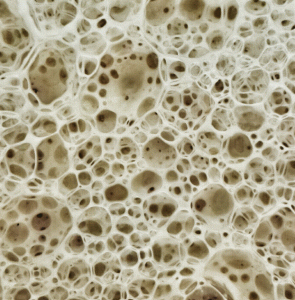
All the different microorganisms are present in the flour from the beginning, and they will adapt to the conditions during the resting phase. By altering the conditions, we can effectively choose the strains.
Here are the factors that affect the quality of a natural starter:
- the ambient temperature during the resting phase
- the ambient humidity during the resting phase
- the hydration level of the mixtures
- the type of base flour (wheat, rye, etc.)
- the types of added sugars and their origins (simple sugars, honey, fruit, etc.)
- the duration of the resting phase
- and the addition of a little bit of mother culture/mother dough
Did you remember to revitalize your mother dough ?
Over the course of time, like you and I, a starter will become old because some of the microbial flora thins out and there are fewer fermentable sugars. On the other hand, like an aged wine, the old starter can develop flavors and aromas that will not be found in a young starter.
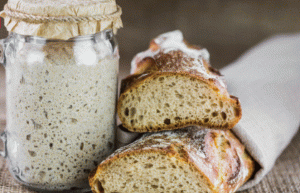
Therefore, it’s common to take advantage of the qualities of an old starter, called a “mother culture”. It’s standard practice to add a small quantity of mother culture to a fresh starter as an “quality booster”. Moreover, this adds authentic and symbolic characteristics, because certain mother cultures are timeless. It’s said that some of the oldest mother cultures are centuries old…and with each use, we add a little history to our bread…
And so in order to maintain the starter, we must feed it regularly with fresh flour and water, and we can say that the starter is “revitalized”.
Sponge, poolish…
Both of these terms refer to pre-ferments and are more or less associated with starter cultures and sourdough. However, the fermentation power of a natural starter, is as the name indicates: natural. Some people might consider the following products to be cheating…
Poolish :
This is a starter with a “fermentation booster” because the recipe calls for another leavening agent (yeast), in addition to water and flour. Its fermentation power is stronger than a natural starter. It’s an adaptable product that will result in a more elastic dough.
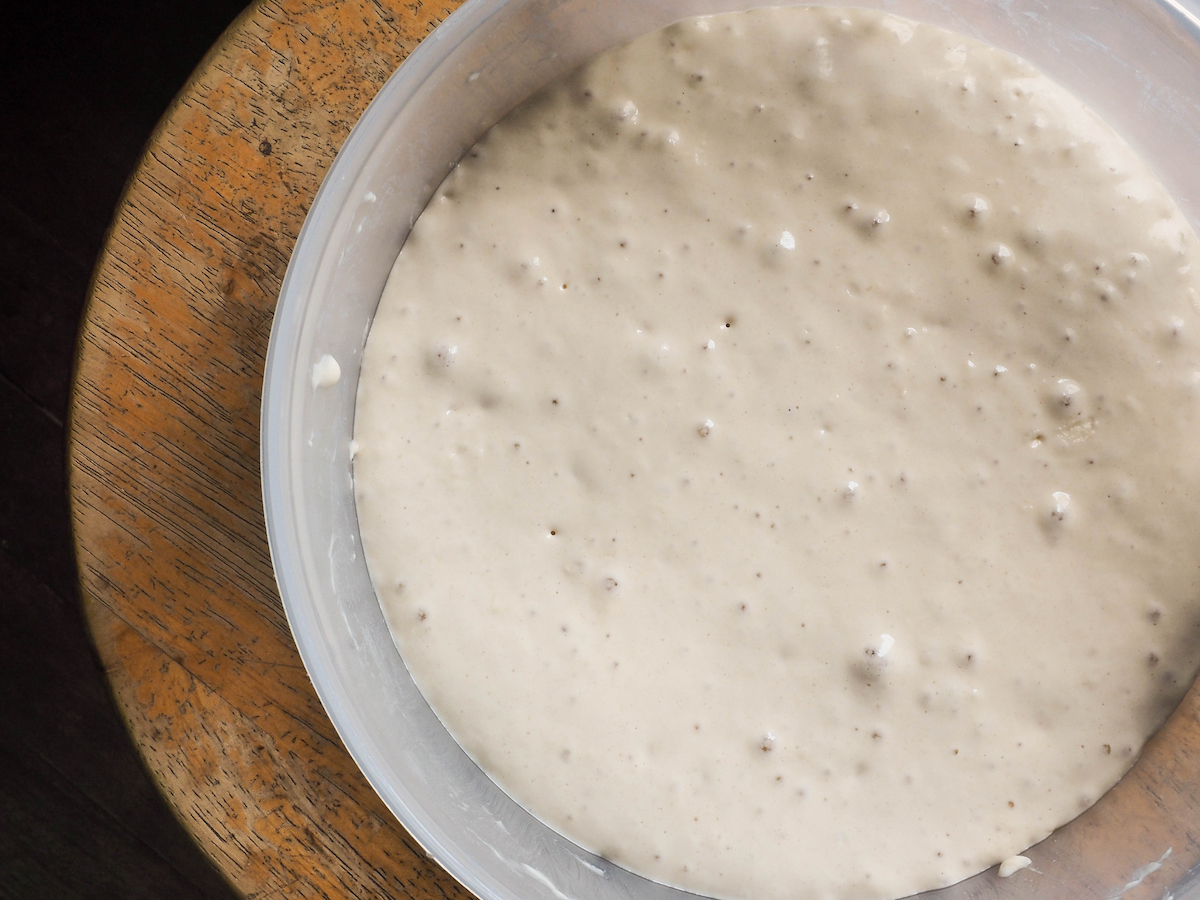
Biga :
Biga is a type of pre-ferment, that can be categorized in the family of “fermented dough”. The preparation is as follows: the ingredients and the kneading process are identical to a standard unworked dough. It does contain yeast, but it is sometimes made without salt, an ingredient which works against the fermentation process. However in this case, this dough will rest and mature in order to develop its distinct characteristics. It is then added to the fresh dough in various proportions. Biga is regularly used in Italian products like pizza and ciabattas.
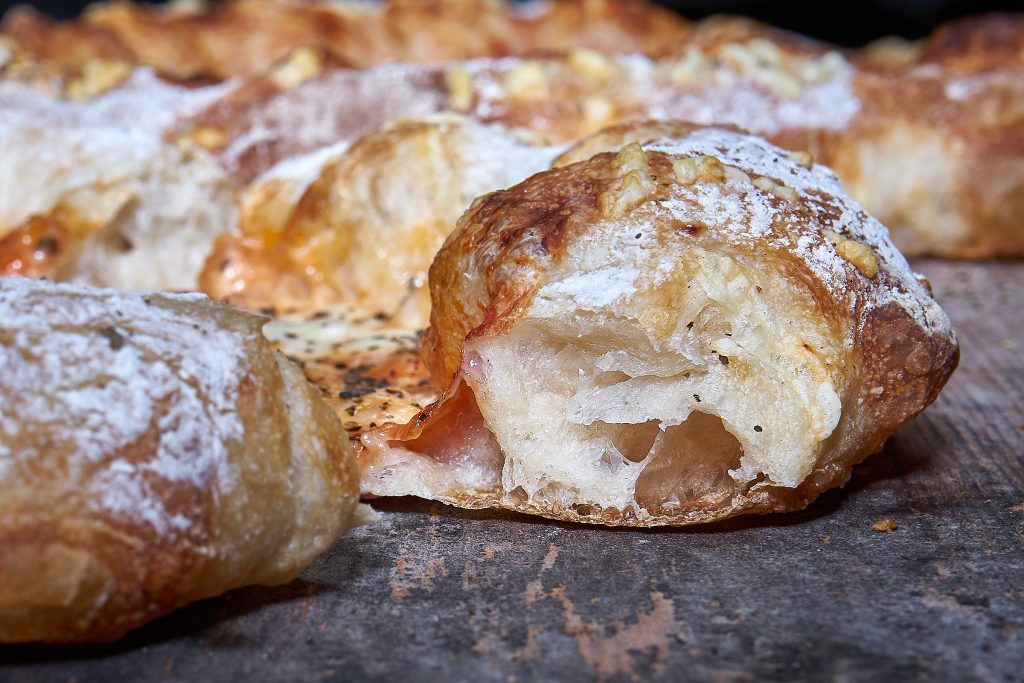
Sponge :
This is perhaps the most difficult term to define. Sponge is like a poolish, but with less water (the water/flour ratio is closer to 40/60).

The different types of modern starters
Currently, many industrial and semi-industrial bakers continue to use the traditional method to create their starter. But today, thanks to the innovation and industrialization of these processes, we have alternative solutions to obtain starters more quickly and easily. The advantages of these modern starters are that they bring consistency of taste, aroma and texture, which are essential to industrial fabrication.
This article is only an overview of the production techniques related to starter cultures. I will not go into which options are best, or which produce the best quality.
STARTERS
Here we’re talking about how to optimize the fermentation of the culture by adding the pre-selected microorganisms (yeasts and bacteria) bought commercially. Hereafter, the production principles are the same as with a traditional starter.
There is a wide selection of commercial starters available on the market. These starters can give the bread certain sought after characteristics, while avoiding the need for aging or other resource-intensive steps. It’s important to note that when using certain starters (containing only bacteria) the resulting bread cannot be called “sourdough bread” according to French law.
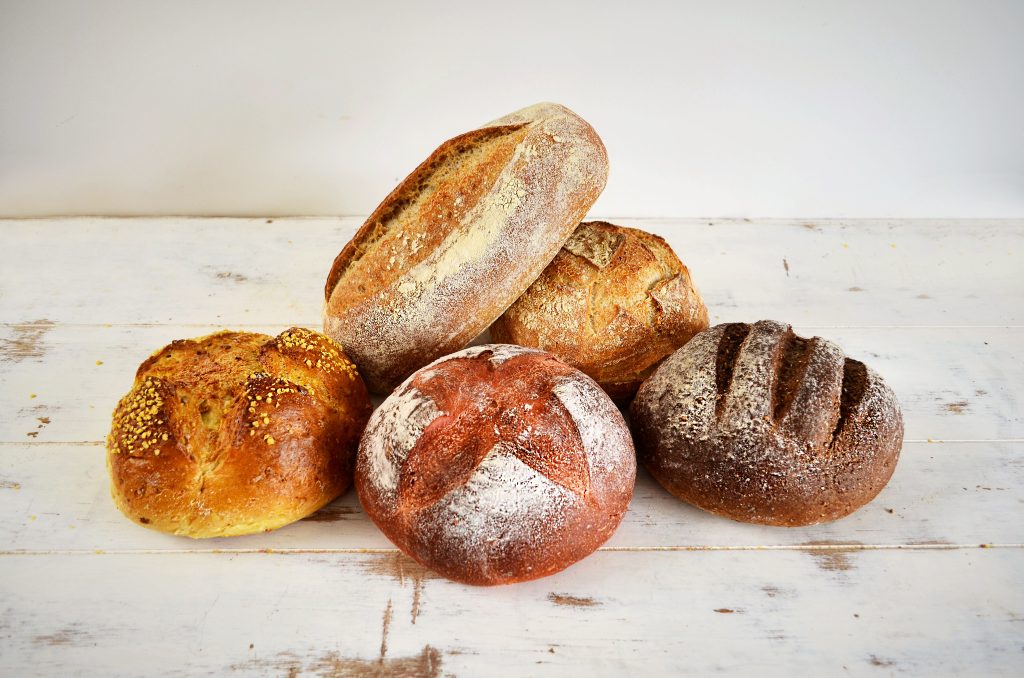
Ready-to-use starters
Dried and devitalized starters
These dehydrated and non-living starters are inert. They are powdered ingredients that are added during the kneading along with salt, leavening agent and water. These contain no living microorganisms, and their role is to add taste and cream color to the dough and thus, to the bread. This type of starter is usually rich in rye flour and roasted malt.
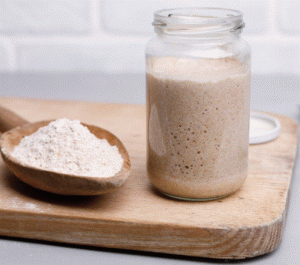
Liquid starters
A “liquid starter” is one that is ready to use. It is preserved in its fresh state, and retains its full fermentation power. There is a wide variety of liquid starters that cover a vast array of different tastes and aromas. The liquid starter is added directly during the kneading.
A CLOSER LOOK AT THE TECHNOLOGIES USED IN THE INDUSTRIAL PRODUCTION OF LIQUID SOURDOUGH
Today, certain industrial bakers choose to make their own starter or sponge in their own factory.
Making an in-house starter or sponge allows you to:
- have a unique and proprietary recipe,
- be able to control the fabrication processes,
- reduce purchase costs.
But doing it in-house comes with certain demands. You must:
- invest in complex and demanding equipment,
- adapt to a liquid process that’s different from the dough process – which is traditional in the baking industry
- accept certain to constraints in the production, in order to anticipate the amount of starter/sponge necessary to feed the production lines later.
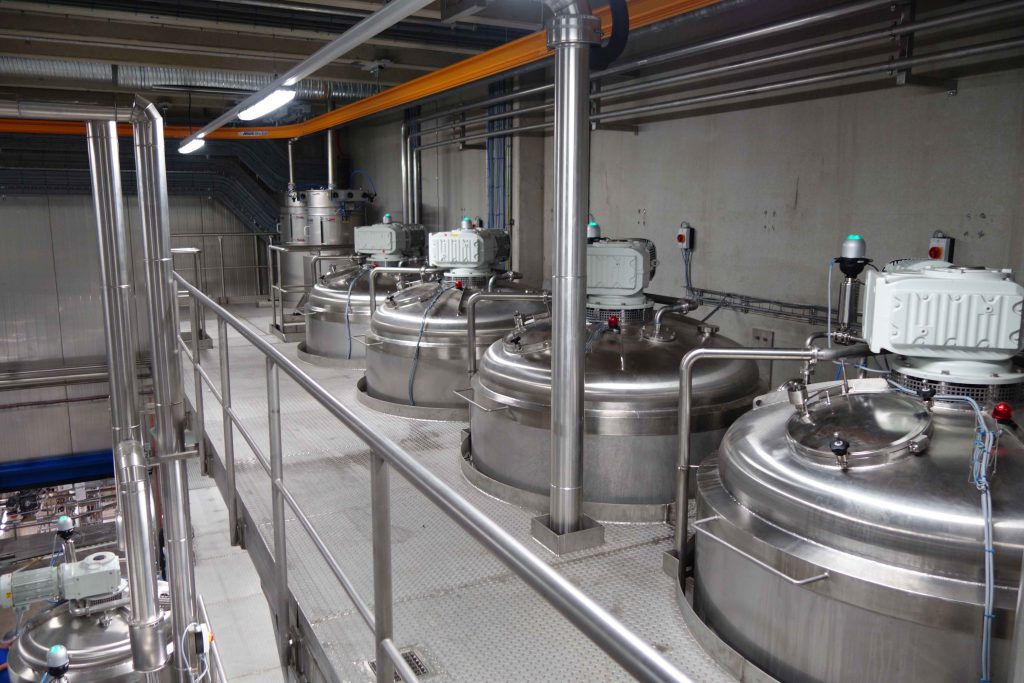
3 KEY STEPS IN THE FABRICATION
The fabrication process of the starter or sponge can be outlined in the following three steps:
- measuring the ingredients of the starter or sponge recipe
- mixing the ingredients
- allowing the mixture to rest
The first key step: the measurement of both dry and liquid ingredients:
This step is quite similar to what happens at ingredient measurement stations in industrial kneading. Only the dry ingredients (in theory, just the flour) are measured automatically.
Yeast is added by hand as fresch blocks. Mother sourdough may also be added at this stage.
Also added by hand are the liquid ingredients, of which there will be at least water (for sourdough), yeast (if it’s in liquid form) and mother sourdough.
The second key step: mixing the ingredients
As is the case for kneading, the mixing has several objectives. We are not only mixing the ingredients to evenly distribute them and to produce a homogeneous product, the main objective is to eliminate all lumps and make the mixture smooth, or even liquid.
The third key step: resting the mixtures
At this step, the precision of the tools comes into play. There are multiple concerns:
– keeping a consistent temperature throughout the mixture
– keeping the temperature cycles within the target range
– allowing some movement within the mixture without altering the texture
– moving the mixture on to the kneading process in a timely manner
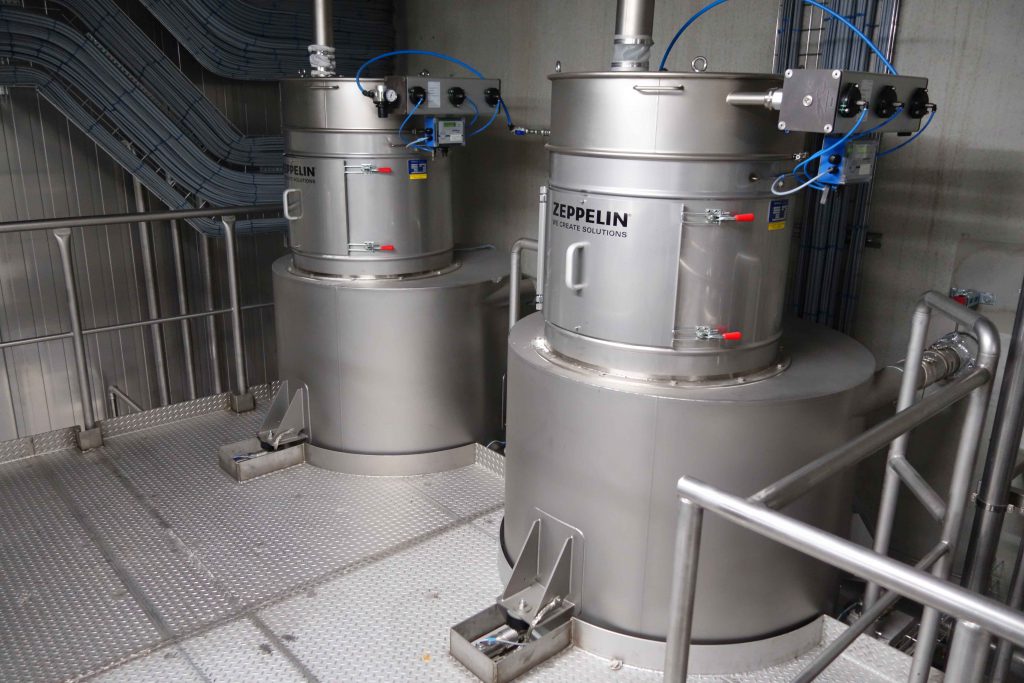
This brings us to an ideal spot to introduce Zeppelin Systems, a firm that offers a range of equipment designed specifically for the industrial production of leavening agents and sponges. But that’s not all…
ZEPPELIN’S LIQUID PRE FERMENT INDUSTRIAL PRODUCTION SOLUTIONS
Zeppelins Systems’ interest in biotechnology goes back to the beginning of the 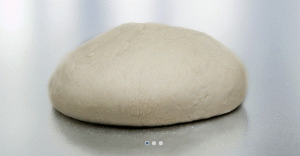 1990s. Surprisingly, this company not only manufactures equipment for storage, measuring, transferring and mixing of powders (in the food-processing industry, these practices were started by the firm Reimelt), Zepplin Systems also has expertise in processes related to dough production and fermentation.
1990s. Surprisingly, this company not only manufactures equipment for storage, measuring, transferring and mixing of powders (in the food-processing industry, these practices were started by the firm Reimelt), Zepplin Systems also has expertise in processes related to dough production and fermentation.
Their clients come with an almost unending list of demands depending on: the final product, the ingredients, the consumer’s culture, the industry fads… Zeppelin Systems has chosen to assist their industrial clients in the fabrication of unique sourdough breads by finding tailor-made solutions.
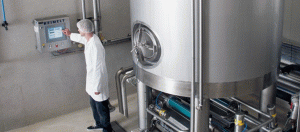
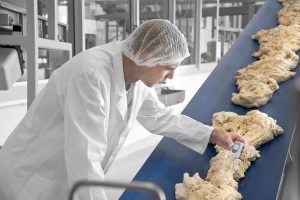
From the beginning, Zeppelin Systems has informed their work in biotechnology with data from third party research institutes. For example, Zeppelin Systems has integrated methods for testing and quality control provided by IGV (Berlin) and their research center based in Frankfort. Their prototype installation allows them to verify the processes and reproducibility of future industrial tools.
Measuring and Mixing Solutions
For Zeppelin Systems, the factors that determine success are: the precision measurement of each ingredient, and an efficient mixer specifically chosen for the job. These factors have resulted in the development of a system of continuous preparation that is energy efficient and allows for instant hydration in small quantities: the DymoMix.
Solutions for aging/resting and cleaning
The next step is to design and configure a system to match the fermentation methods required by the client. For example, the client might need automated control of temperature, humidity or air quality in the fermentation chamber, or to manage acidity changes in the preparation of starters or in the automatic re-inoculation from the mother culture.
The precision control of stirring (allowing gases to escape optimally and regularly), and in-place cleaning of vats and pipes (NEP or CIP systems) are essential factors of success. These factors also permit the stability of the strains of microorganisms, the consistency of the products, and the continual high quality over time.
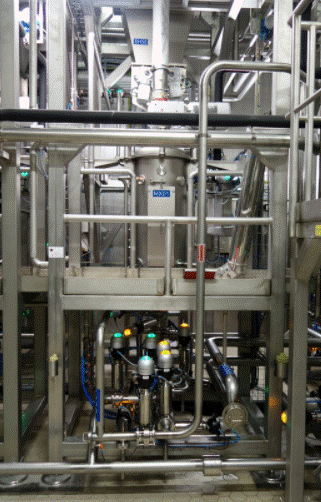
INTRODUCTION OF ZEPPELIN SYSTEMS FIRM
A little history…
Founded in 1908 in southern Germany, on the banks of Lake Constance, Zeppelin found its market niche in the design and fabrication of airships of the same name. In 1950, the company moved in a new direction with the fabrication of aluminum storage silos – the first in the world.
Today the company has diversified its activities further downstream into processes and engineering, while still continuing their activities in the handling of powders and liquids. They hope to completely master all fabrication processes, and this is why they retain control of almost 80% of the key components used in their systems.
A few figures:
– an annual turnover of 300 to 500 million euros
– more than 1600 employees in over 10 countries
– 500,000 hours of engineering annually
Values and Slogan
– The company’s values: Humans are the fundamental and central value
– The company’s slogan: We create solutions!
And in France…
– For the last 40 years, the French entity, based near Lyon, has a workforce of 30-40 people who work from the design stage to the final installation, and who do training and after-sale service.
Scope of Technical Expertise
Handling of raw materials from A to Z: ordering and receiving of raw materials, storage, extraction, transportation, transformation, measuring, mixing and control/automation
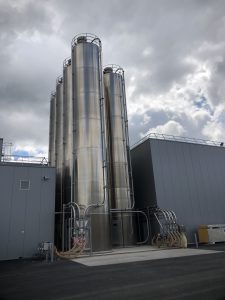
Continuous kneading with they Codos system: nonstop mixing, stirring, and kneading
Automation of various functions such as Industry 4.0, control systems and quality assurance, NIR technology, optical inspection systems, auditing tools, batch monitoring.
A few words about the traceability management tool and process PrismaWEB

Nothing is beyond the limit of modern automation processes with the system manager Web PrismaWEB. This is because PrismaWEB offers many more functionalities than standard systems, and has several levels of functionality within the MES system (production management system). Among the things offered by PrismaWEB are:
- management of ingredients, recipes and storage
- production planning
- batch monitoring

This system uses Microsoft .NET technology. The use of open protocols like HTML, XML, OPC and SQL allows for simple integration with existing IT systems. Multi-step production poses no problem for PrismaWEB. Premixes can be introduced as distinct formulas or as an ingredient in the main formula, and can be treated later. The required quantity of a premix is determined by the system, according to the production plan. All the recorded data can be analyzed directly in the database, or transferred to the company’s control systems. Individual interfaces to ERP systems (e.g. SAP) are also possible.
IN CONCLUSION,
The goal of this article was to clarify the techniques related to starter cultures. This is one of the many technical subjects with difficult terminology that I would like to demystify and explain layman’s terms.
It was also an opportunity to present some of the industrial solutions available, that can greatly assist in the fabrication of starters, of one of the most important components in the current baking industry.
I was happy to be able to present the firm Zeppelin Systems, that I have known for numerous years now. The technical relationships that I forge with my suppliers in the baking industry always start with a human connection. It’s always a pleasure to work with the teams at Zeppelin Systems France, because of their combination of technical expertise, friendly service and tailor-made solutions.
This article was written by Ronan Le Bourhis, founder of Hopi Consulting, engineering specialized in the baking industry. You can find all my other articles about the baking industry on the Hopi Consulting blog.
This article was translated from French to English by Phillip Meade. Phillip offers translation services and English language training. Phillip can be contacted at phillipmeade@gmail.com/06.58.77.38.57
Bibliographie & pour en savoir plus :
Qu’est ce que le levain ? Comment le préparer ?
Levain dur ou levain liquide ?
Merci à Caroline pour son support : https://www.cmasson-conseil.fr/
Les pains français – Philippe Roussel & Hubert Chiron
Levure et panification – Les affres/Techno Nathan
Le compagnon Pâtissier – D. Chaboissier
Le compagnon Boulanger – J.-M. Viard
Image : Bread_FERM_Preferment-Consistencies_Levain_Rye_Poolis_Sponge_Biga_

